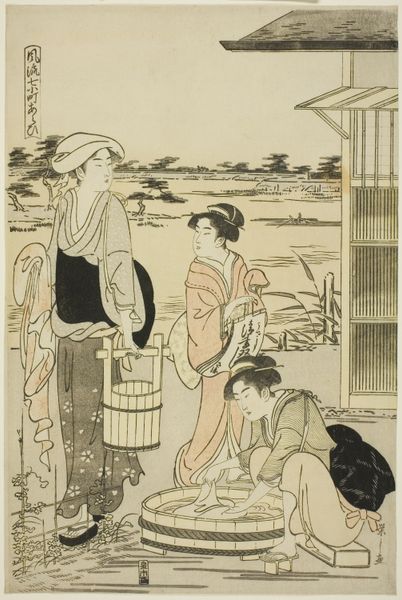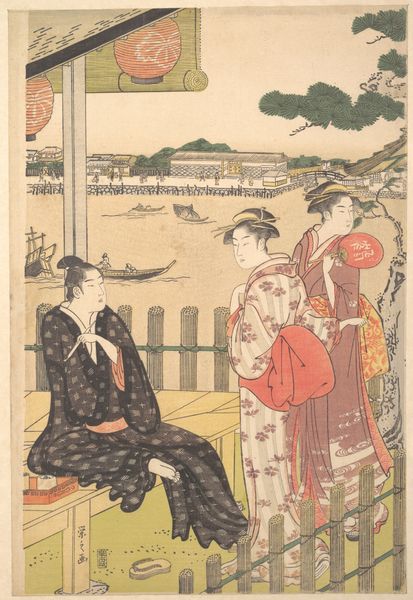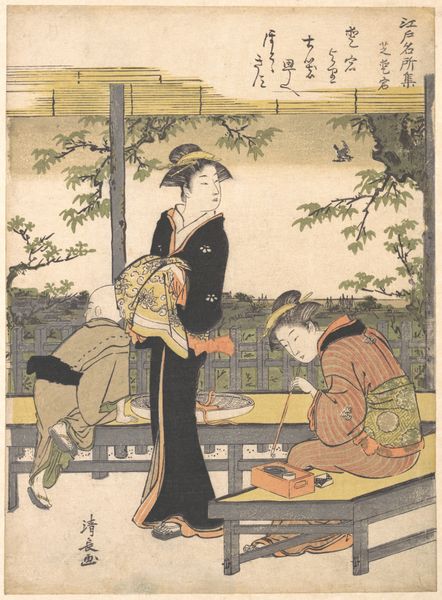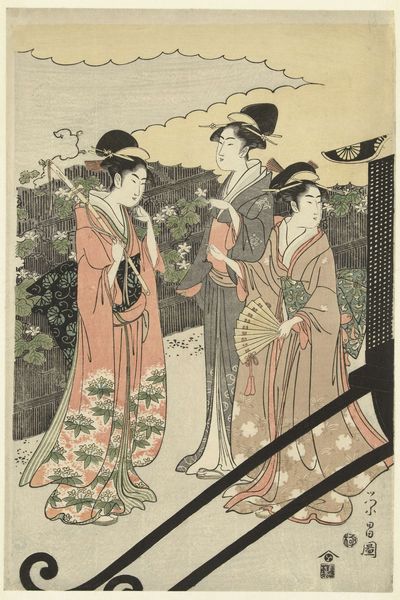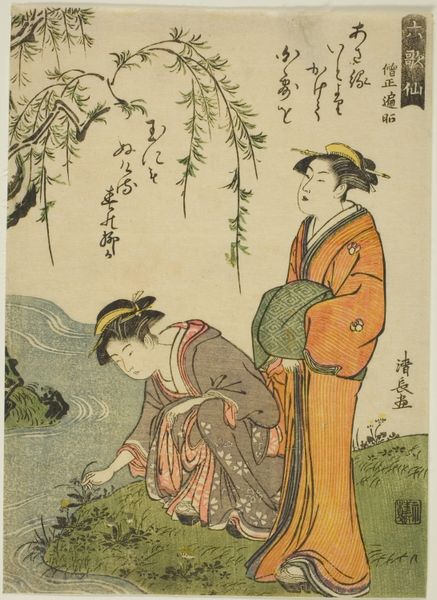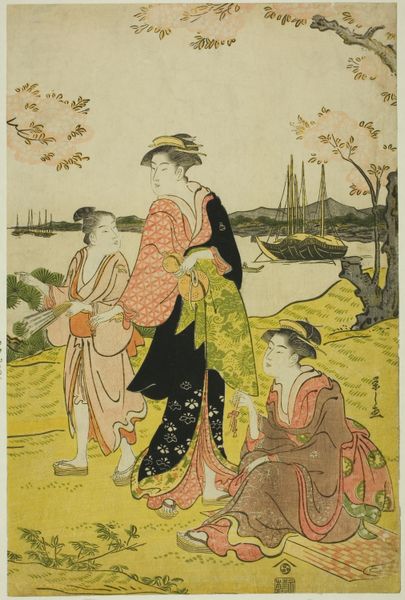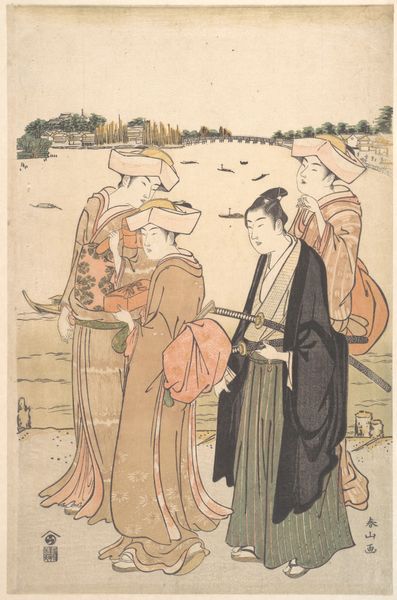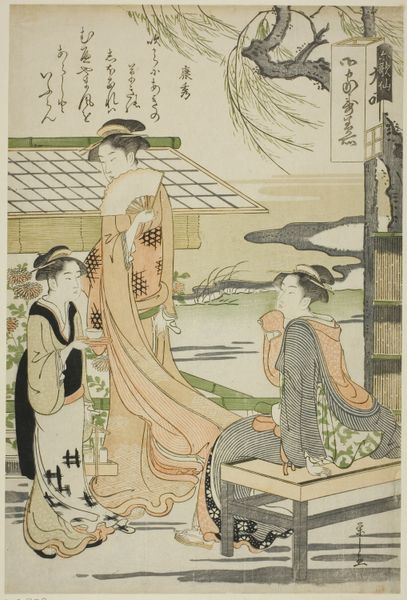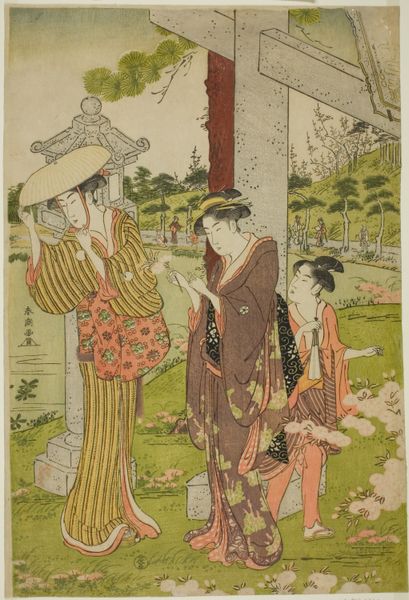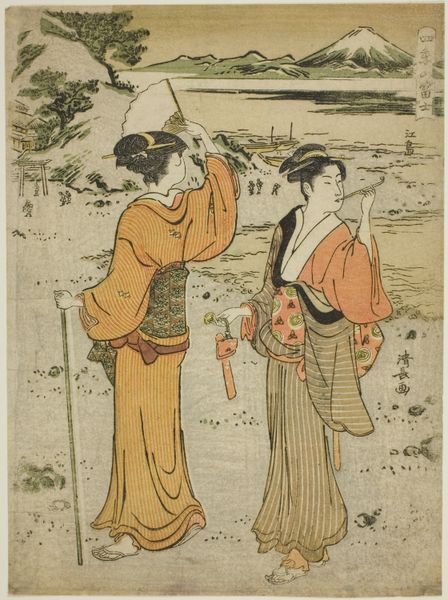
print, watercolor
#
portrait
# print
#
asian-art
#
landscape
#
ukiyo-e
#
watercolor
#
genre-painting
Dimensions: 38.3 × 25.9 cm
Copyright: Public Domain
Curator: Here we have Torii Kiyonaga's "Ferry on the Rokugo River," a striking ukiyo-e print dating from around 1784, presently housed at The Art Institute of Chicago. Editor: It possesses a serene, almost melancholic quality. The figures, while elegant, seem oddly detached from their surroundings. What is your first impression regarding materiality and creation? Curator: The work intrigues me with its elegant use of line and subtle color gradations, features highly characteristic of Kiyonaga’s artistic maturity. Observe how the artist organizes the composition, creating visual planes using the figures and the landscape in the background to give depth. It also makes a strong case for ukiyo-e aesthetics, does it not? Editor: Absolutely. You get a real sense of the collaboration that must have been essential in the production of a color woodblock print. The process from Kiyonaga’s initial design to the block cutter’s labor and the printer’s skillful layering of pigments feels very present. It’s not simply an image; it's the culmination of multiple crafts. I wonder who labored to bring it to fruition? Curator: Let's examine how Kiyonaga uses the concept of a flattened perspective characteristic of the era. By eliminating traditional chiaroscuro, he redirects our attention to line and form. Take the clothing, for instance: It adheres strictly to Japanese sartorial structure and the arrangement highlights these two-dimensional qualities to amplify a figure’s essence. Editor: Yet the textile patterns speak to another dimension – consumption. These are not merely abstract forms but indicators of status and trade. The labor involved in weaving these intricate patterns, their economic value, it all coalesces within the print. This interplay challenges the traditional divide between high art and artisanal creation. Curator: And consider the emotional dynamic—the elegant figures, poised, seem unperturbed, almost ethereal as they embark across Rokugo River. Note especially, how the landscape isn’t merely background, rather, it becomes a participant in the unfolding narrative. This imbues the print with quiet dynamism. Editor: Reflecting on the labor involved—from the river ferrymen to the textile weavers to the printmakers—underscores that these serene scenes are as much about material production as about refined aesthetics. Curator: Yes, truly it showcases how Kiyonaga synthesized stylistic form and design within ukiyo-e tradition. Editor: A testament to the blend of art, craft and labor that produced this cultural touchstone.
Comments
No comments
Be the first to comment and join the conversation on the ultimate creative platform.

